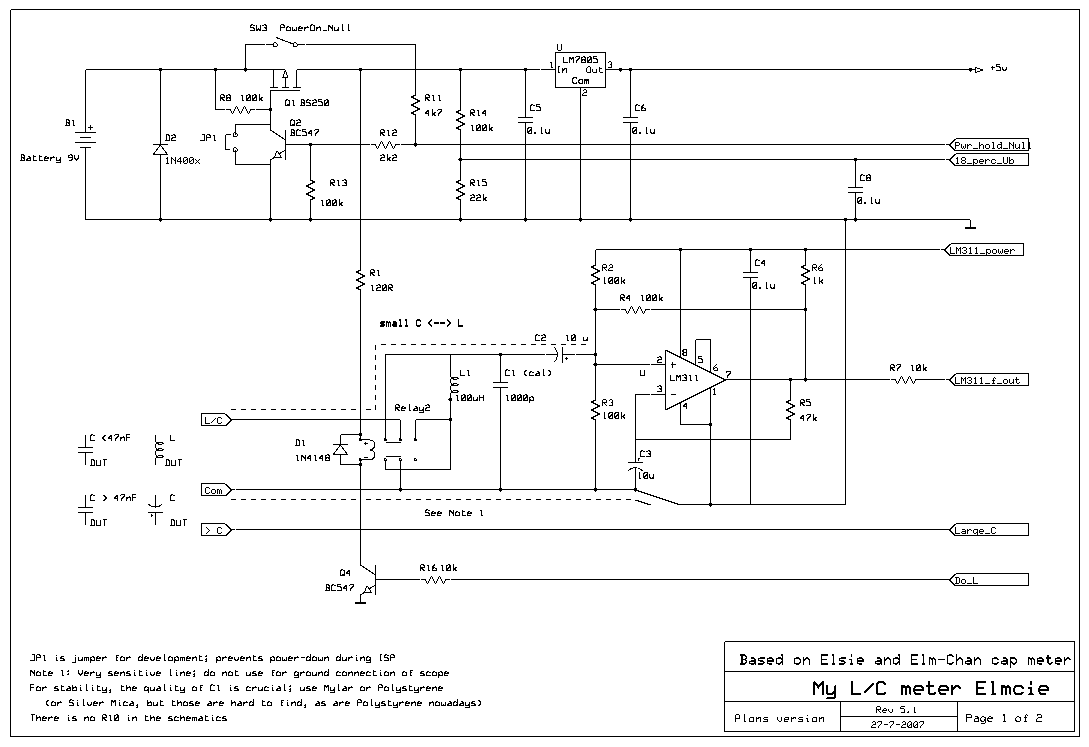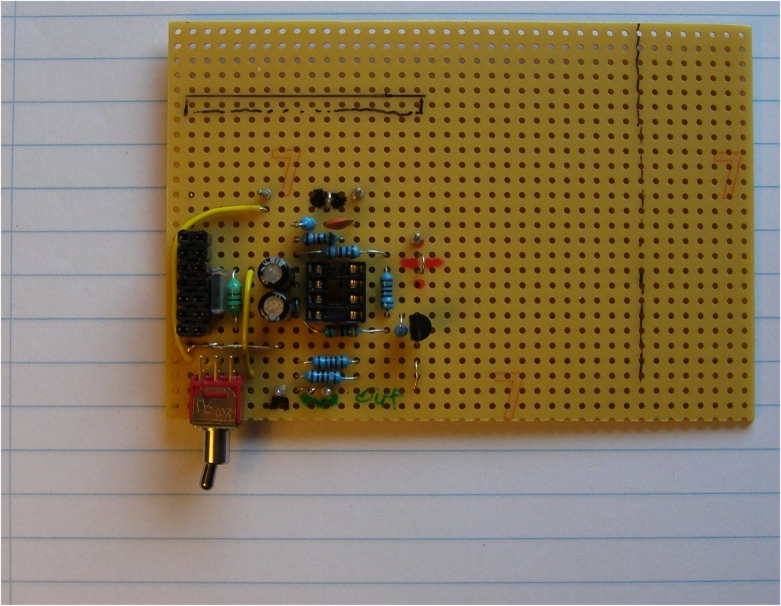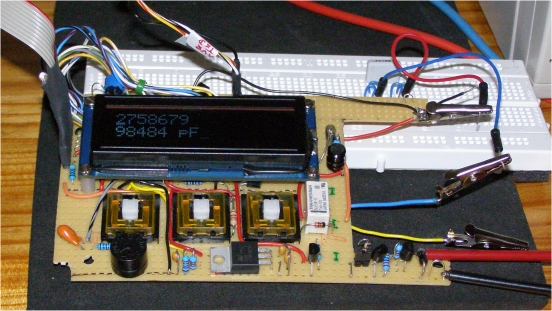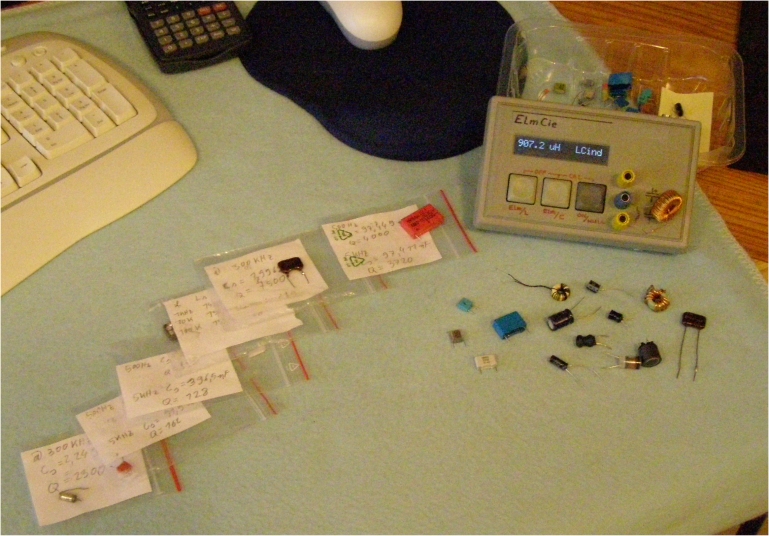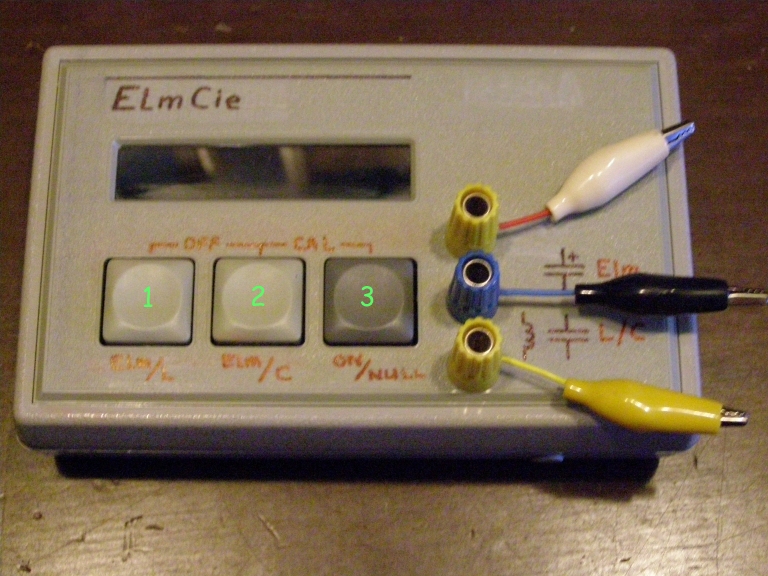Schematic sheet 1 of 2:
1.
The power for the relay is derived from the 9V supply. If you use a
5V-relais, R1 can be omitted and the 5V can be used instead.
2.Keep the lines between the LM311
inputs and the connector where you connect the DUT to, as short as
possible. The same applies for the Large_C-line.
Use a good capacitor for C1, f.i. a polystyrene like this one

If you can find a silver-mica .... that would be even better

For the inductor L1 the same applies.
A small one like this one

was tested and found to be okay by other users.
My experience with it was not that good, so I used this one in the final build:
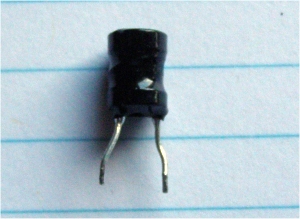
3. You may use a 78L05 (the small version) instead of the 7805, but
bear in mind that it will get warm. You can reduce that by powering the
relay form the 9V (as I did), and powering the backlight of the LCD
from the 9V. Be carefull though .... 9V is deadly for the LCD and the
AVR.
4. Read the notes in the schematic please :-)
Schematic sheet 2 of 2:
5. If
you write your own software, or adapt mine, consider to skip the
backlight-boost (PortB.1). Elmcie is a battery powered device, and I
found that one standard setting is sufficient. Doing so frees portB.1 .
You can use it to control the LM311_power from a separate pin. (note
that LM311_power-control and the 3k3 pull-up for Elm are now controlled by one pin )
6. The ISP-pins are used for the
LCD-data, and omitting the 4k7 resistors R36-38 will cause problem
during ISP. Also note that R9 pulls the E-signal for the LCD low to
prevent ISP-errors.
7. The quasi RS232 interface in the
upper left corner can be omitted or replaced with a Max232 or alike. In
case your LCD requires a negative bias-voltage, it's recommendable to
do so.
Software rev 2.0:
8. If you write your own software, read the ELMCIE2_0.rtf . There is quite some information in the comments which you will (or should I say: may ?) find to be usefull.
9. With the release of revision 2.0 I added a procedure that contains
an instruction in .rtf-format, and in total 4 programs. No need to be
alarmed ... it's not that bad :-)
Just unzip it, open 123_Elmcie_Pre-flight_instructions_R1.rtf
 April 29, 2008 : New software available ( Rev 2.0 ) ; Ii includes a procedure and 3 help-programs to assist you adapting the software for your build.
April 29, 2008 : New software available ( Rev 2.0 ) ; Ii includes a procedure and 3 help-programs to assist you adapting the software for your build.
 April 29, 2008 : New software available ( Rev 2.0 ) ; Ii includes a procedure and 3 help-programs to assist you adapting the software for your build.
April 29, 2008 : New software available ( Rev 2.0 ) ; Ii includes a procedure and 3 help-programs to assist you adapting the software for your build. February 2, 2008 : How to control Elmcie with only three pushbuttons GO!
February 2, 2008 : How to control Elmcie with only three pushbuttons GO!